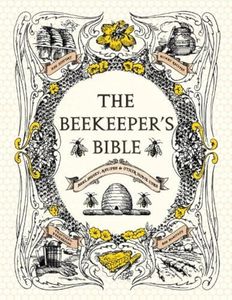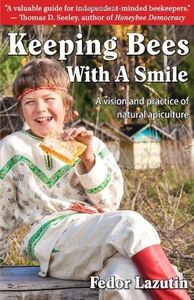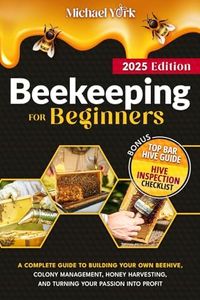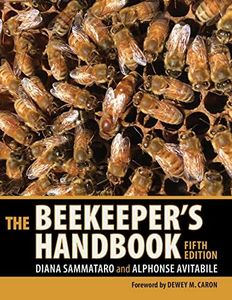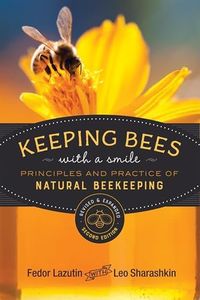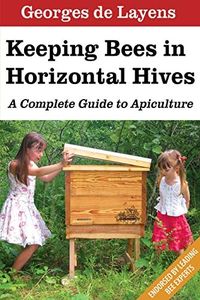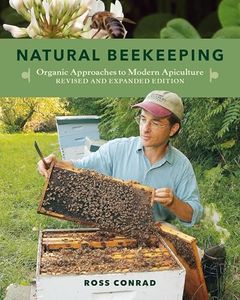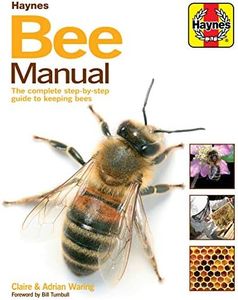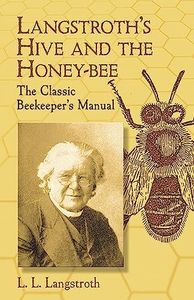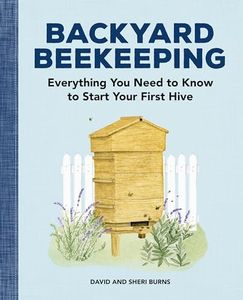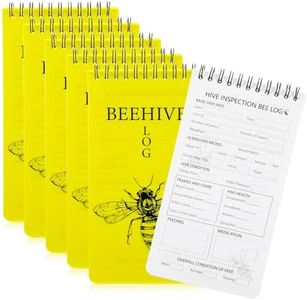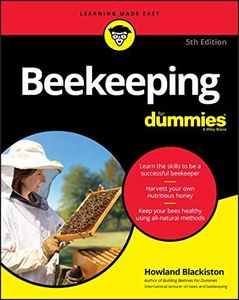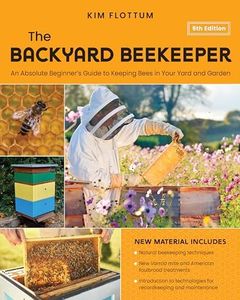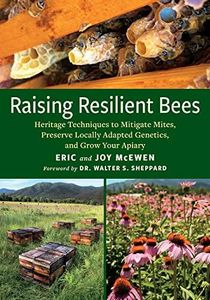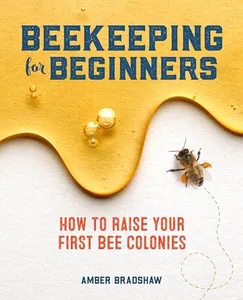10 Best Beekeeping Books 2025 in the United States
Our technology thoroughly searches through the online shopping world, reviewing hundreds of sites. We then process and analyze this information, updating in real-time to bring you the latest top-rated products. This way, you always get the best and most current options available.

Our Top Picks
Winner
The Beekeeper's Bible: Bees, Honey, Recipes & Other Home Uses
Most important from
2468 reviews
The Beekeeper's Bible is a comprehensive guide that stands out in the beekeeping book category, making it ideal for both beginners and experienced beekeepers. Authored by experts, it offers a wealth of knowledge that covers various aspects of beekeeping, from the biology of bees to honey production and even recipes that incorporate honey. This breadth of information ensures that readers gain a deep understanding of the craft.
One of the book's significant strengths is its lavish illustrations and diagrams, which make complex concepts more accessible and engaging. These visuals can be particularly helpful for visual learners or those who appreciate a more hands-on approach to understanding bee behavior and hive management. Practical tips and techniques are clearly articulated throughout the text, which many readers have found beneficial. These insights can help both novices and seasoned beekeepers improve their practices, enhancing their success in beekeeping.
Most important from
2468 reviews
Keeping Bees with a Smile: A Vision and Practice of Natural Apiculture (Gardening with a Smile, Book 3) by Fedor Lazutin (2013-05-03)
Most important from
82 reviews
Fedor Lazutin's 'Keeping Bees with a Smile: A Vision and Practice of Natural Apiculture' is a highly regarded book in the beekeeping community. The author is known for his expertise in natural apiculture, and this book is part of the 'Gardening with a Smile' series, which suggests an emphasis on sustainable and eco-friendly practices. The book spans 402 pages, indicating a comprehensive look at beekeeping. It is available in English and published by DeepSnowPress in 2013. Lazutin's experience and vision for natural beekeeping provide a solid foundation for the content, making it appealing for those interested in non-traditional beekeeping methods.
The book offers depth in content, covering various aspects of beekeeping from setup to maintenance. It includes practical tips and techniques that can be applied by both novice and experienced beekeepers. The illustrations and diagrams are likely to be beneficial, aiding in the understanding of more complex concepts and practices. However, regional relevance might be a concern as the practices advocated by Lazutin could be tailored to specific climates and environments, possibly making them less applicable in different regions.
This book is best suited for individuals interested in sustainable and natural beekeeping practices who are open to exploring alternative methods. It may be less useful for those seeking mainstream beekeeping practices or tailored advice for specific regions outside the author's experience.
Most important from
82 reviews
Beekeeping for Beginners: A Complete Guide to Building Your Own Beehive, Colony Management, Honey Harvesting, and Turning Your Passion into Profit | + BONUS: Hive Inspection Checklist
Most important from
658 reviews
Beekeeping for Beginners is a comprehensive guide that caters well to those new to the world of beekeeping. The book's author demonstrates solid expertise, providing readers with a foundation built on practical knowledge and techniques. One of its strong points is the depth of content—it covers essential topics like building a beehive, managing a colony, and honey harvesting, making it a useful resource for anyone looking to get started in this rewarding hobby. Additionally, the inclusion of a Hive Inspection Checklist as a bonus is a nice touch that enhances its practicality, helping beginners keep track of essential tasks and checks.
Illustrations and diagrams are also featured throughout the book, which can greatly aid understanding, especially for visual learners. The book is printed in a convenient paperback format and is relatively lightweight, making it easy to handle while working in the field. Prospective readers may want to consider if the content is regionally relevant to their specific area as beekeeping practices can vary significantly.
This guide is well-suited for beginners eager to dive into beekeeping. Its practical tips and engaging layout help demystify the process, though potential buyers should ensure that the information aligns with their local conditions.
